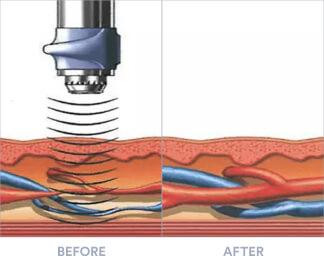In the world of medical treatments, shockwave therapy has emerged as a groundbreaking modality for pain relief and rehabilitation. This non-invasive and highly effective technique utilizes acoustic waves to target musculoskeletal conditions and promote healing. In this article, we explore the remarkable benefits of shockwave therapy, its applications, and how it is revolutionizing the field of pain management and recovery.
Understanding Shockwave Therapy
Shockwave therapy involves the application of acoustic waves to targeted areas of the body experiencing pain or injury. These high-energy acoustic waves generate microtrauma within the affected tissues, triggering a healing response. Shockwave therapy is typically administered through a specialized handheld device that delivers precise and controlled shockwaves to the targeted area. This non-invasive treatment stimulates blood flow, promotes tissue regeneration, and reduces inflammation, helping to alleviate pain and enhance the body's natural healing processes.
Benefits of Shockwave Therapy
Shockwave therapy offers a wide range of benefits for individuals suffering from various musculoskeletal conditions. Firstly, it is a non-surgical and non-pharmacological approach, making it a safe and drug-free alternative to traditional pain management methods. Shockwave therapy has been found to effectively reduce pain and improve function in conditions such as plantar fasciitis, Achilles tendinopathy, tennis elbow, and shoulder impingement syndrome. Additionally, it accelerates the healing process by stimulating the production of collagen, a key component in tissue repair. The treatment is quick, typically lasting only a few minutes per session, and requires minimal downtime, allowing patients to resume their daily activities soon after treatment.
Applications of Shockwave Therapy
Shockwave therapy has shown remarkable efficacy in treating a wide range of musculoskeletal conditions. It is commonly used for conditions such as chronic tendonitis, ligament injuries, muscle strains, and stress fractures. In sports medicine, shockwave therapy is frequently utilized for the treatment of sports-related injuries, helping athletes recover and return to their optimal performance levels. Additionally, shockwave therapy has demonstrated positive outcomes in promoting bone healing and reducing pain associated with osteoarthritis. Its versatility and effectiveness make it a valuable treatment option across multiple disciplines, including orthopedics, physical therapy, and rehabilitation.
The Treatment Process and Considerations
The shockwave therapy process typically begins with an initial assessment by a healthcare professional to determine the suitability of the treatment for the patient's condition. The treatment itself involves the application of the shockwave device to the targeted area, with the intensity and frequency of the shockwaves adjusted based on the patient's comfort level and the specific condition being treated. The number of treatment sessions required can vary depending on the severity and chronicity of the condition. While shockwave therapy is generally safe and well-tolerated, it may not be suitable for individuals with certain medical conditions or during pregnancy. It is important to consult with a qualified healthcare provider to assess the suitability of shockwave therapy for each individual case.
For More Info:-
Shockwave therapy for ED Dallas






Comments